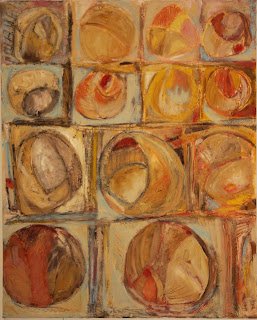
By Bill Knief
Published in The Taos News 12-10-09
After 20 years as a classroom teacher in the Taos municipal school district, Jim Gilroy (AKA “Mr. Gilroy” to generations of students) has served for the past several years as the Dean of Instruction at UNM-Taos. In this time of transition, deepening budget cuts and increasing need for community college services, I asked him to share his thoughts on where we stand today.
“As administrators, people responsible for the general well being of this institution, I think the biggest concern that Kate O’Neill and myself and Dennis Cruz and Mario Suazo feel is living within our means. One of the worst things we could do is jeopardize the future of this institution by not doing that. And yet the needs are so great. With the economic crunch right now we are seeing more students than ever coming in from construction jobs, coming in from the mines, from the service industries, coming in from businesses that are reducing the number of their employees. People are looking at this as a time to retool and gain some skills to enhance their job opportunities in the future.
“We have three or four hundred more students than we did only a year ago, and yet our budget has been cut by 15.5 percent. I appreciate that our Executive Director Dr. Kate O’Neill is trying to hold harmless the instructional side of our operation so students have the courses they need for their degrees, their certificates and their transfers to other institutions. Everyone including the academy heads has really taken to heart the economic hardships both in the community as well as in public institutions like UNM.
“We used to do a fair number of courses we called trial balloons to see if there was interest in a particular area. We have fewer and fewer of those nowadays. Students are enrolling in certificate and degree programs because they need critical skills either for employment in the community or transfer to other institutions. We still offer more courses than ever---somewhere around 284---but we are trying to be certain that they really do meet the students’ career and academic needs.
“Already, just four days into spring enrollment, we’ve seen a couple of courses starting to fill. Word is getting out to students that they need to enroll early so they can be assured a place in the classes they need. Faculty are doing more personal recruiting for particular classes and helping students one-on-one.
“The exciting news is that we have just received our temporary Certificate of Occupancy for Pueblo Hall and the Department of Instruction is scheduled to move out to Klauer in about a week. We’re excited. Pueblo Hall provides us with six new classrooms with capacity for up to 40 students each, larger than any we have at present. I think what we are going to notice is a true sense of a campus, a sense of a college community out there.
“There is a snack bar where a person can get a bite to eat between classes and we are planning to invite the entire community at noon after faculty orientation on January 16 to come out and meet the faculty and help us celebrate the opening of Pueblo Hall. It’s a beautiful building filled with natural sunlight. The water you turn on is heated by a solar hot water heater. Air is circulated through all the rooms by a solar convection system that automatically exchanges air without energy use. We are told that there will be a 70 percent overall reduction in energy use, and that’s something to be proud of.
“We are very, very fortunate to serve the community with an outstanding full time and adjunct faculty. Over 60 percent of our academic faculty have terminal degrees, which means Master’s, PhD’s, law degrees and the like, far more than at main campus. The qualifications for our academic faculty are identical to main campus, because they all have to be approved by department heads and deans down there before they can teach. There is no distinction between teaching here or at UNM in Albuquerque.
“As an academic institution we probably have one of the best prepared faculties anywhere, and the tuition charged makes it an exceptional deal for students. Younger students especially are becoming aware of that. We don’t accept low standards in any of our classes. We want students to come out very well prepared, and we are proud of their successes. We have zero tolerance for bullying and harassment. We take incidents of this nature very seriously. Our job is to provide a safe and secure environment for all students.
“Faculty, staff, students and the community at large are justifiably proud of UNM-Taos and how it has grown since the mid 90’s. I’d love to take a look at this place twenty years from now and see what we have.”









